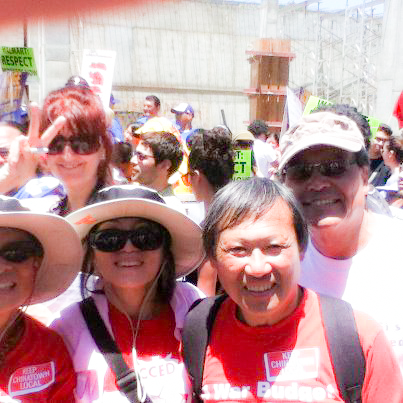For those who have not seen our previous emails, the National Hispanic Environmental Council (NHEC) is still accepting applications from students to participate in our upcoming 11th annual “Minority Youth Environmental Training Institute” to be held July 20–30, 2012 in Las Vegas, New Mexico and other beautiful areas of Northern NM. (note: this is New Mexico, not Las Vegas in Nevada). Interested students should apply as soon as possible for the slots that remain.
Through a full scholarship NHEC will COVER ALL COSTS for accepted students, including round-trip airfare, housing, meals, books, science equipment, and more for the 11 day long Institute.
Like our NYC and CA regional Institutes, the national Institute in NM is an intensive, residential, science-based, 11 day long environmental education AND environmental career training program for top students, aged 16—19, deeply interested/active in the environment. Students are selected competitively from all across the U.S. and Puerto Rico. Note that students in both high school and college are eligible to apply.
The NM Institute is being funded by several sponsors, including the U.S. Fish and Wildlife Service, U.S. Environmental Protection Agency, USDA Natural Resource Conservation Service, and the U.S Forest Service. Utilizing an Environmental STEM curriculum students will learn about a wide range of environmental issues, as well as conduct field studies (testing air, water, soil, plus doing biological assessments, birding, and more) using professional-grade environmental science equipment, taught by NHEC’s experienced instructors and other environmental professionals. Students learn in a variety of sites, including national parks, national wildlife refuges, national forests, laboratories, and more.
Students are housed and fed at New Mexico Highlands University (in Las Vegas, NM) and closely supervised by NHEC staff/instructors. The Institute is designed to build the next generation of environmental leaders and professionals. Students learn about key natural resource and environmental topics, as well as the wide range of careers in the natural resource and environmental arena, plus how to land jobs/internships with our federal agency sponsors. These agencies are actively seeking to recruit Institute students to work for them this year and next, and will have recruiters on-site to interact with students.
In addition to our Instructors, NHEC uses an overlay of volunteer “role models” — working minority professionals from every environmental field — who participate each year. These role models are present daily (4-5 each day, every day) who help teach the curriculum, inspire the students, and share their “environmental journey”. Role models contribute their scientific technical knowledge and policy issue expertise.
The attached pdf files contain all materials necessary for students to apply. Please read the “Fact Sheet” first, as it has key information about the program. Interested students should apply as soon as possible as the Institute is fast approaching.
To view photos from previous NM and regional Institutes, go to: www.nheec.org
We also ask that you forward this email on to those you think might be interested in this highly educational program, including qualified students, fellow educators, high schools, colleges, youth organizations, and more. We appreciate your help.
Feel free to contact NHEC, especially our Programs Coordinator, Juan Rodriguez, at jrodriguez@nheec1.org or myself, at rrivera@nheec1.org or NHEC at 703-683-3956 if you have any questions. Thank you!
Roger Rivera
President, NHEC


